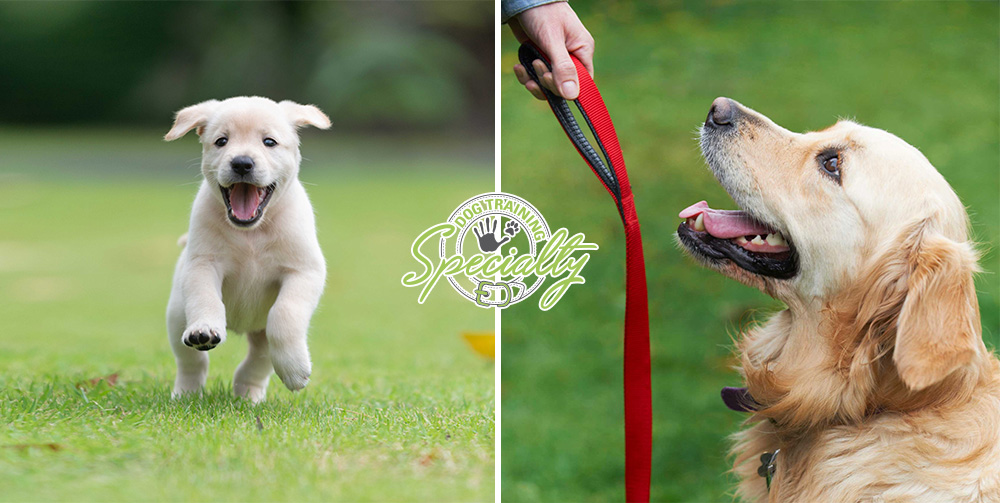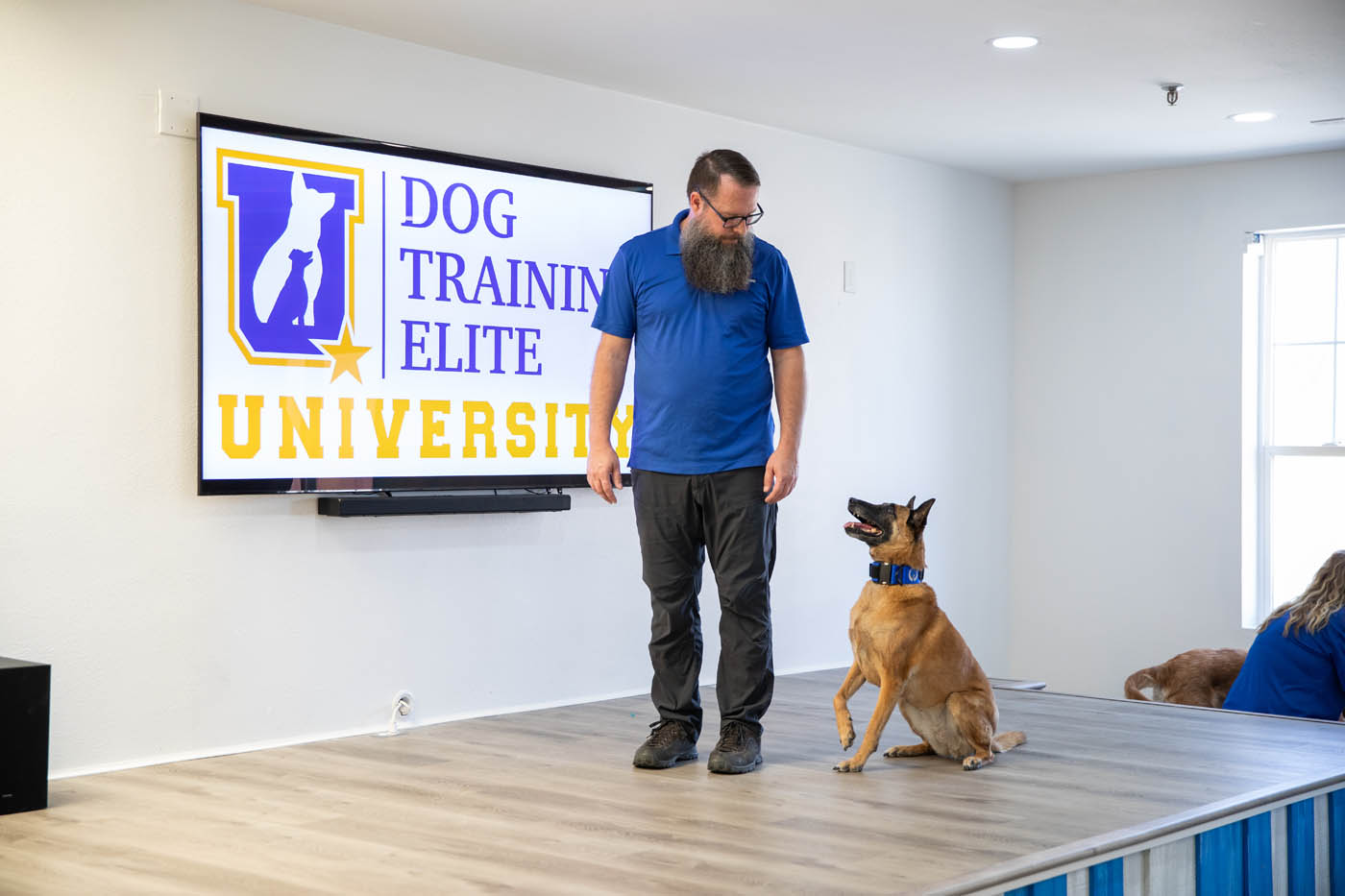Unleash Potential with Dog Training Near Me: Discover Your Local Experts
Unleash Potential with Dog Training Near Me: Discover Your Local Experts
Blog Article
The Ultimate Overview to Pet Dog Training: Building a Delighted, Loyal Pet
Effective pet training is a complex procedure that pivots on a deep understanding of canine behavior and the application of tested methods. By welcoming favorable reinforcement and regular command usage, animal owners can cultivate not just obedience but likewise a strong, relying on partnership with their dogs.

Comprehending Dog Behavior
Exactly how does a pet dog's behavior mirror its psychological and psychological state? A pet's actions can work as a window right into its sensations, needs, and total psychological wellness. As an example, a wagging tail normally represents happiness and exhilaration, while a reduced tail may suggest worry or entry. Vocalizations such as barking or yawping can interact a selection of feelings, from happiness to distress.
Body movement additionally plays a crucial duty in understanding canine behavior. A loosened up position and open mouth signal comfort, whereas stressful muscle mass and pinned ears may suggest anxiety or aggression. Observing these signals is necessary for recognizing the source of a pet dog's actions, whether it stems from disappointment, exhilaration, or concern.
In addition, a dog's communication with its atmosphere and various other pets can provide insight into its mood. For example, a canine that engages happily with various other pet dogs is likely sensation social and secure, while one that shows evasion or aggressiveness may be experiencing tension or insecurity. Understanding these behavioral hints is essential for fostering a solid partnership between the pet and the owner, eventually adding to the pet dog's emotional health and wellness and health.
Necessary Training Strategies
Efficient pet dog training strategies are crucial for cultivating preferable actions and enhancing the bond in between a dog and its owner. Using favorable support is among one of the most reliable techniques, where benefits such as deals with, appreciation, or playtime are provided to strengthen desired actions (Dog training). This motivates the pet to duplicate those habits, creating a positive discovering setting
Uniformity is another critical aspect in pet dog training. Commands should be uniform and clear, and all relative need to apply the same policies to prevent puzzling the dog. Timing is just as important; incentives should be offered quickly after the desired habits to develop a clear link in between the activity and the reward.
In addition, brief and appealing training sessions are efficient, as pet dogs have varying interest spans. Goal for sessions of 5 to 15 mins, depending on the pet's age and energy degree. Incorporating play into training can also boost inspiration and enjoyment for both the proprietor and the pet dog.
Last but not least, persistence is important. Canines discover at their own pace, and keeping a tranquil demeanor will aid minimize irritation, ensuring a favorable training experience. These essential methods prepared for successful pet training and an unified connection.
Standard Commands to Teach

Use treats, praise, and playtime to compensate your canine's successes. By instilling these basic commands, proprietors equip their dogs with the skills needed for a well-behaved and unified connection.
Dealing With Common Behavioral Issues
Recognizing and resolving usual behavior concerns in pet dogs is necessary for fostering an unified partnership between animals and their proprietors. Several dogs display behaviors such as excessive barking, eating, or aggression, which can come from anxiousness, boredom, or absence of correct training. Recognizing the origin reason of these behaviors is the initial step towards efficient treatment.
For instance, excessive barking may show a demand for attention or a reaction to environmental stimuli. In such situations, owners must assess the pet dog's environment and supply appropriate psychological stimulation, such as interactive toys or regular workout. Eating can often be managed by redirecting the habits to ideal eat products and making sure that the pet dog has adequate physical task to lower monotony.
Aggressive actions requires careful handling and may require medical assistance dogs professional training assistance. It's vital to comprehend that penalty can exacerbate anxiousness and aggression, leading to a cycle of behavior problems. Instead, focus on favorable reinforcement techniques to compensate desirable actions and strengthen a feeling of protection.
Structure a Positive Training Atmosphere
Developing a favorable training setting is basic for enhancing desirable behaviors in dogs and mitigating behavioral issues. This environment ought to be characterized by uniformity, inspiration, and a clear understanding of the training goals. By establishing a routine, dogs learn what is expected of them, which helps in reducing stress and anxiety and complication.
Utilizing positive support techniques, such as deals with, appreciation, and play, cultivates a sense of safety and security and inspiration in the pet. Rewarding good behavior instantly and constantly strengthens the wanted activities, making the training process much more efficient - Dog training. Furthermore, fitness instructors ought to stay client and tranquility, as dogs are sensitive to their handlers' emotions
The training space must be without distractions to make certain the dog can focus on the tasks at hand. Take into consideration utilizing a quiet area or a safe and secure outdoor location. page In addition, including playtime and socializing right into training sessions advertises an all-round method, improving the pet's learning experience.
Ultimately, a positive training setting supports a solid bond between the pet and handler, resulting in an obedient, pleased pet. By prioritizing this atmosphere, pet owners can properly deal with behavior difficulties and grow a successful training trip.
Final Thought
Efficient canine training relies upon a comprehensive understanding of canine habits and the application of favorable support methods. By understanding vital commands and attending to behavior issues with persistence and clear interaction, owners can foster a solid bond with their animals. Producing a supportive training setting boosts security and trust, eventually leading to the advancement of a well-behaved and joyous friend. Embracing these principles guarantees a satisfying training experience for both dogs and their owners.
Reliable canine training is a complex process that pivots on a deep understanding of canine behavior and the application of tested techniques. A pet that engages playfully with other canines is most likely sensation safe and social, while one that displays evasion or aggression may be experiencing stress and anxiety or instability.Reliable pet training techniques are important for cultivating visit desirable behaviors and strengthening the bond between a pet dog and its owner.Creating a favorable training setting is basic for strengthening desirable behaviors in pets and alleviating behavioral issues.Reliable pet training relies on an extensive understanding of canine behavior and the application of favorable reinforcement strategies.
Report this page